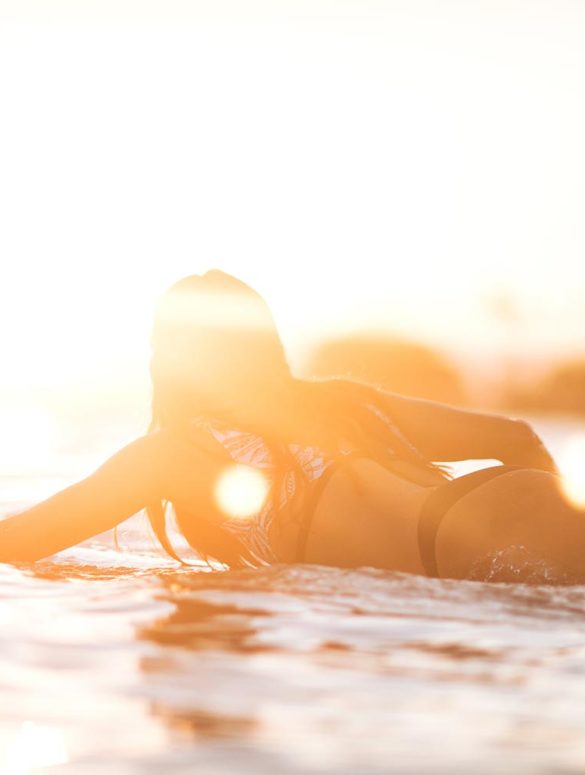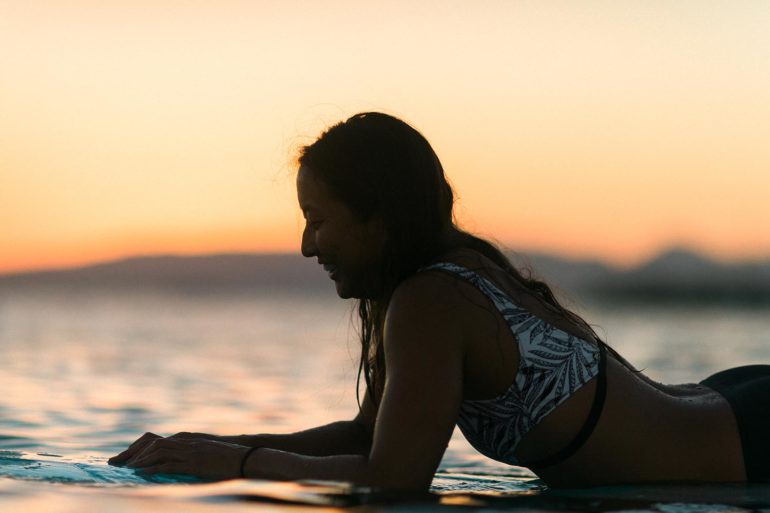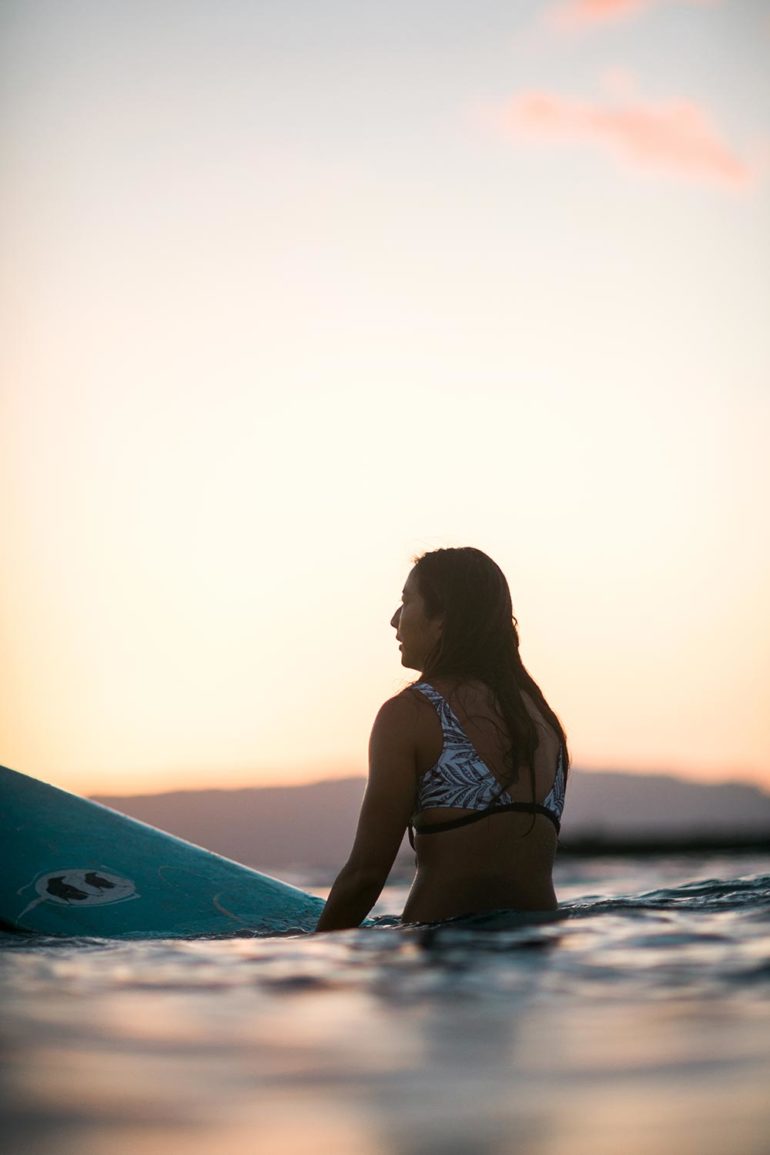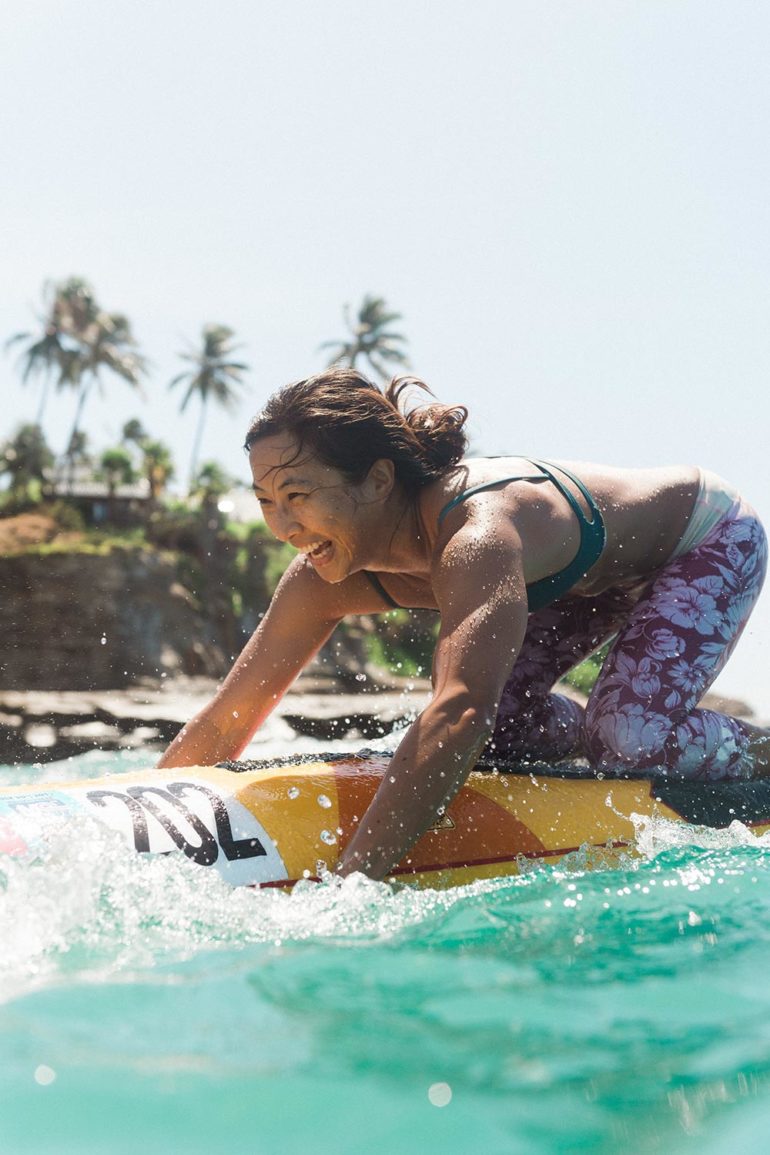I am not an athlete. I am definitely not an endurance athlete. These are things I told myself for most of my life. Until, one day, I decided to cross the 32 miles between Moloka‘i and O‘ahu on a prone paddleboard, just to prove that I could.
It started with such a small thing: a race to shore after a surf session at Secrets on O‘ahu’s southeast coast. I beat my friend, who had crossed the Kaiwi Channel many times before. “Maybe you should do the Moloka‘i-to-O‘ahu,” he said, dropping the comment as casually as a child brushes sand off her feet.
But nothing is as small as it seems. The tiny wave lapping at your toes is the accumulation of energy that has traveled a long distance. A shift in tide, barely noticeable to those who aren’t watching, is caused by the moon, a very large thing.
The day I decided I would cross the channel, I had erased things that didn’t seem small: a husband, a home, a job. In that moment, I felt like a different person than before I had entered into those contracts.
Surfing was partly to blame. I had fallen into the sport a few years before, and it had unearthed a physicality in me that I had never known. I went every day, came to know the surfers in the lineup. I stayed in the water until the moon rose and sent a silvery beam along the water straight to me, as if showing me a path. For the first time in three decades, I felt at home in my own body.
Through surfing, I learned the basics of the ocean: tides, swell, wind. Through paddleboarding, I learned its language. When prone paddleboarding, you lie or kneel on a long, narrow board that’s like a cross between a canoe and surfboard and propel yourself with only your arms. Pulling myself through the water this way feels like crawling across the surface of the sea, giving me time to study the bumps in the water, the curves of the coastline.
On 17-mile training runs in preparation for the race from Moloka‘i to O‘ahu, I observed the water at its moodiest. Around Makapu‘u Point, waves from every direction tried to buck me off my board. Off the coast of Alan Davis Beach, the waves began to line up. Delirious laughter escaped me as I found their rhythm.
A little farther, past Hanauma Bay, the water felt violent, crashing against the coast so forcefully I could hear nothing else. By the time I got to Black Point, the seas were calmer, and the water had a stickiness, as if refusing to let me go. Rounding the corner of Diamond Head, I saw the lighter blue of Waikīkī, like that of a lover’s eyes, the sign that I was home.
Through surfing, I learned the basics of the ocean: tides, swell, wind. Through paddleboarding, I learned its language.
Now in its 23rd year, the Moloka‘i 2 O‘ahu World Championship race is reputed to be the most challenging paddleboard event in the world because of its deep and turbulent path. Kaiwi means “the bone,” a reference perhaps to its history of swallowing sailors and spitting up their corpses along the southeast shore of O‘ahu. This is the channel that claimed renowned waterman Eddie Aikau, where winds of 30 miles an hour can whip up 20-foot waves.
In 2016, I completed my first Kaiwi Channel crossing with a partner who was skilled in the ocean. We built our love on the water, and the race was a culmination of our passion. When we broke up, I thought I was done with paddleboarding, but I found myself signing up for the race the following year, this time with a different partner, who was new to the channel.
After a few months of training, I was filled with dread. Preparing for a race is like falling in love: The first time, you revel in the beauty and exhilaration of the experience. The second time around, you know challenges await, and so might heartbreak.
Four hours into the race, the tide turned, literally. While the race’s elite athletes were nearing the finish line, my partner and I struggled as we sensed the tide switch and drop, pushing us away from O‘ahu. I felt my arms and the minutes drag. Yet each time I jumped into the water to switch off with my partner, I let the water close over me, and in the silence and weightlessness of the ocean, I thought, I am lucky to be here.
Each stroke, every time I put my hand in the water, is such a small movement. But together, they have become the parts of me that I like. And that is no small thing.






